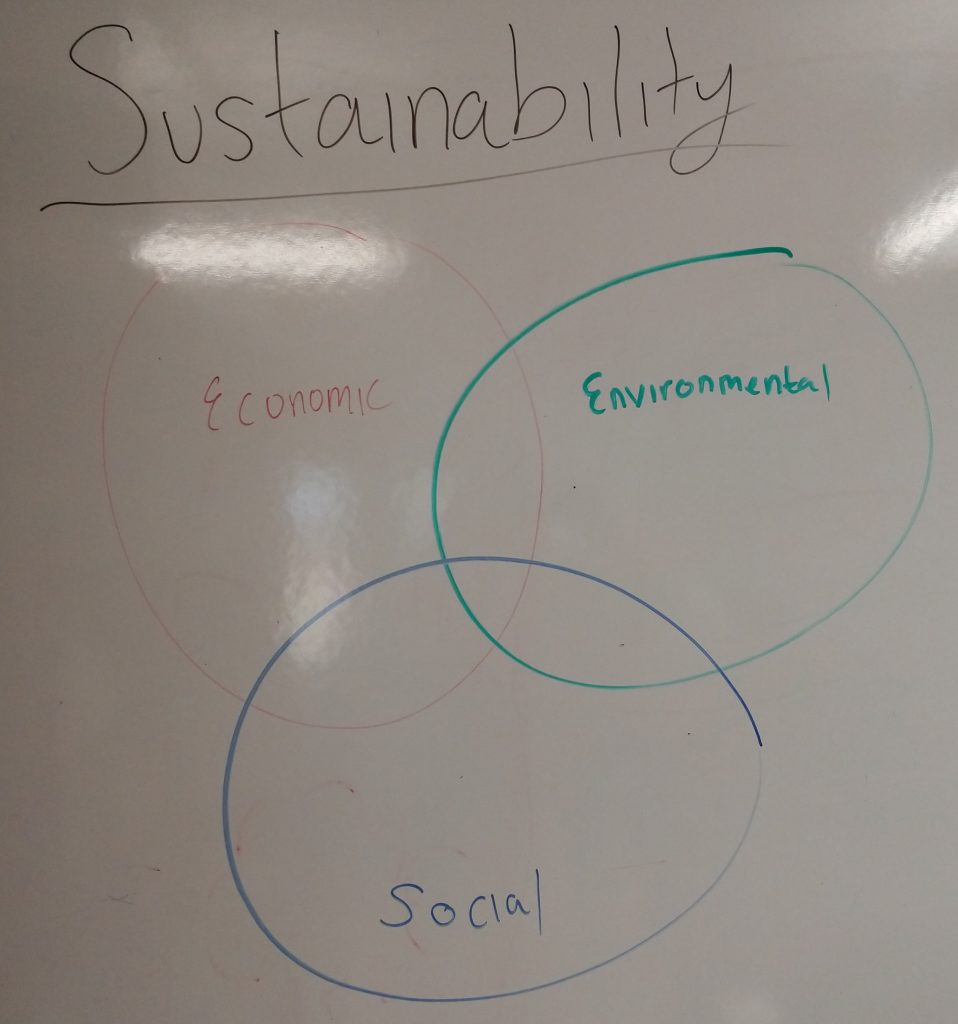By Katie Simpson Johnson
If you had asked me two months ago to define sustainability, I probably would have rattled off some stale answer about natural resources and greenhouse gases. In reality, sustainability encompasses so much more.
It is important that we all have a common definition of sustainability so that thoughtful discussions can take place. The concept of sustainability is growing in popularity, and now, more than ever, it is important that the public get involved in the conversation. Broadly, creating a sustainable community means developing a place that values all kinds of people and has achieved economic stability, while decreasing its impact on the land and conserving natural resources for future generations. From this definition, it is clear that there are three main components underlying the idea of sustainability:
- The Social Component
Social equity is a crucial focus for sustainable communities. Things like equitable and affordable housing, and equal access for all residents to resources like schools, hospitals, and parks fall under the scope of social equity. As well, it is important that no geographic area or socioeconomic group endure the most of the burden of a greening community.
- The Economic Component
A thriving economy is the lifeblood of a sustainable community. Economic development can, and should, occur alongside the greening of a community. Many communities these days are capitalizing on developing the renewable resources available in their region. Innovative business development can also drive a local sustainable economy.
- The Environmental Component
Sustainable communities reduce their impact on the land for both economic and ethical reasons. The land represents not only an economic resource, but it has its own intrinsic value as well. In many communities, the local landscape has shaped that area whether it be a large shipping-port city, a small farming village nestled in the mountains, or a seasonal town with a tourist-based economy. This component is receiving a growing amount of attention as focuses on greenhouse gas emissions reductions and air and water quality policies are being implemented almost globally.
These three components contained within sustainability are helpful when explaining the idea. However, the practice of sustainability is far more complex and interconnected. For example, one aspect of a sustainable community is its walkability. This means that commercial districts are compact and easily accessed by people in the community. This can lead to improved business development and retention in the business districts. A walkable city also means that there is infrastructure for alternative transportation, such as bike lanes and sidewalks. Increasing the proportion of commuters and customers that use bikes to get downtown will represent a reduction in greenhouse gas emissions. Finally, walkable cities also mean equitable access for all residents to resources such as healthcare, education and their place of employment.
Not only does this example of a walkable city seek to improve a community’s economic, social, and environmental stability, but it is also interwoven into other sustainable strategies. The walkability of a city may increase the influx of new residents, which might affect housing markets and affordable housing. It may make the city more attractive to tourists, who then increase the wear-and-tear on infrastructure. It may even lead to a spike in pedestrian or bicyclist fatalities.
Every community is unique is their needs and in their culture. Sustainable solutions are not a one-size-fits-all type of policy; they must be tailored to each individual community, by each community. For this reason, public input is an incredibly valuable resource and it is the reason we all need to have a common definition of sustainability.








